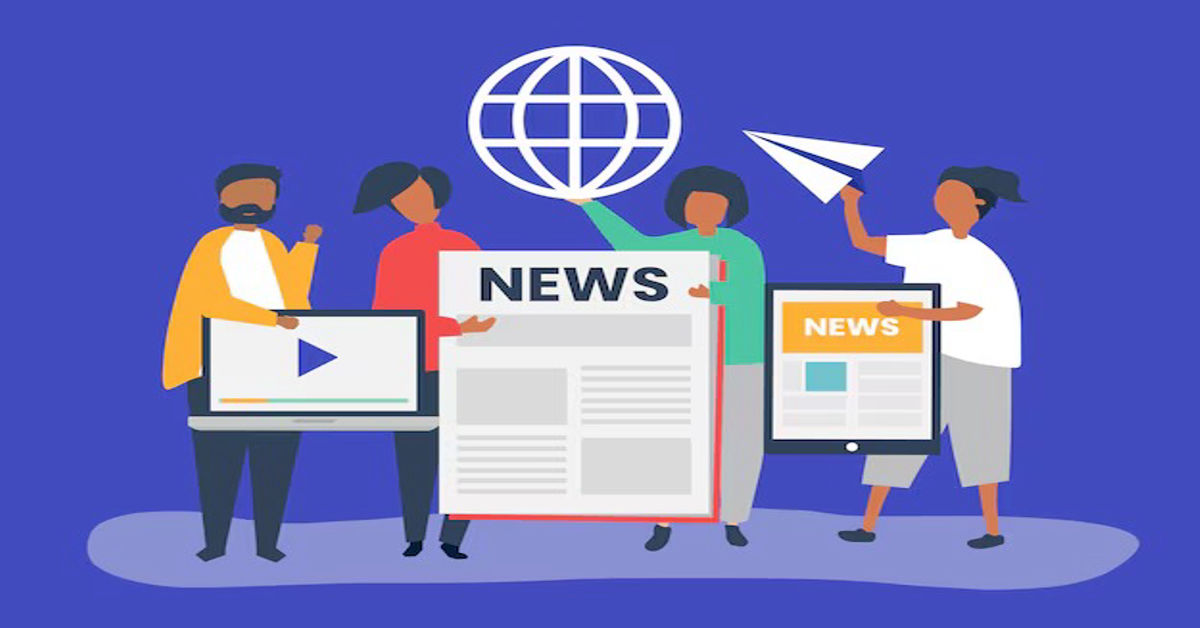In the modern digital landscape, the way we consume news has drastically changed. Traditional media outlets are no longer the sole gatekeepers of information. Platforms like Before It’s News have emerged to challenge the conventional flow of news and ideas. These platforms promote a form of citizen journalism, where everyday individuals can publish stories and share views that may not find space in mainstream newsrooms.
This article provides an in-depth look into Before It’s News, highlighting its operations, controversies, audience engagement, and what role it plays in the broader media ecosystem.
What Is Before It’s News ?
Before It’s News is an online platform that allows users to publish news articles and opinion pieces without needing editorial approval from traditional journalistic institutions. Founded in 2009, the site was built on the idea of democratizing news dissemination, offering an open-source format for people to share what they believe the mainstream media ignores or suppresses.
While this freedom has led to a wide array of unique stories and perspectives, it has also opened the door to controversy regarding the accuracy and reliability of some published content.
The Rise of Alternative Media
The success of Before It’s News is part of a larger movement toward alternative media. Traditional outlets often face criticism for perceived bias, corporate influence, and limited coverage on fringe or unpopular topics. In response, many users have turned to platforms like Before It’s News for alternative viewpoints, investigative content, and discussions that differ from the mainstream narrative.
Why Alternative Media Gained Popularity
- Increased distrust in traditional news outlets
- Accessibility of publishing tools
- Interest in uncovering underreported stories
- Strong online communities around specific topics
These factors have helped Before It’s News attract a loyal readership seeking stories outside the standard news cycle.
Content Categories on Before It’s News
Before It’s News hosts a wide variety of content categories, each catering to specific interests or audiences. Below is a table highlighting some of the major sections found on the site.
| Content Category | Typical Topics Covered |
| Politics | Geopolitical analysis, government corruption, policy opinions |
| Health | Natural remedies, vaccine discussions, alternative treatments |
| Science | Space exploration, quantum physics, theoretical concepts |
| Economy | Cryptocurrency, inflation, market trends |
| Spirituality | New Age beliefs, metaphysics, religious prophecy |
| Conspiracy | Deep state theories, secret societies, media censorship |
| Environment | Climate change, ecological warnings, green technology |
| Paranormal | UFO sightings, supernatural events, cryptids |
This diversity enables the site to capture traffic from a broad array of interests, which contributes to its continued visibility in search engines and social media discussions.
Audience and Reach
The typical audience of Before It’s News includes individuals interested in alternative viewpoints, independent researchers, and readers skeptical of mainstream narratives. The site reportedly garners millions of page views per month, with much of its traffic driven by social sharing and direct visits rather than search engines alone.
Characteristics of the Audience:
- Highly engaged with long-form content
- Open to unconventional or fringe ideas
- Values independent reporting over corporate news
- Often participates in comment discussions and community forums
Before It’s News capitalizes on this by offering tools for contributors to directly interact with readers, strengthening community bonds.
Credibility and Controversy
Credibility remains one of the most debated aspects of Before It’s News. While the platform encourages free expression and open discussion, it does not enforce strict editorial guidelines or fact-checking protocols. As a result, many stories on the site contain speculative claims, unverified information, or content flagged by third-party watchdogs.
Common Criticisms:
- Misinformation and sensationalism
- Lack of source verification
- Amplification of conspiracy theories
- Questionable medical advice
Despite these concerns, supporters of the platform argue that it provides a necessary counterbalance to heavily filtered mainstream news. They believe that suppressing alternative views limits public discourse and can stifle critical thinking.
Comparing Before It’s News to Mainstream Media
| Feature | Before It’s News | Mainstream Media |
| Editorial Oversight | Minimal to none | Strong editorial checks |
| Content Source | User-generated | Professional journalists |
| Fact-Checking | Not mandatory | Standard newsroom practice |
| Narrative Control | Open and decentralized | Centrally managed |
| Accessibility to Writers | Anyone can publish | Requires credentials or employment |
| Monetization | Ad revenue, voluntary donations | Corporate funding, ad networks |
This comparison highlights both the strengths and weaknesses of Before It’s News. Its freedom attracts diverse voices, but lack of regulation can compromise information reliability.
Who Publishes on Before It’s News
Contributors range from amateur writers and bloggers to independent journalists and former professionals. Some use pseudonyms, while others publish under real names. The incentive is often driven by the desire to share a unique message, push social commentary, or spread awareness on underreported issues.
Contributors typically self-moderate their own work and can publish on a recurring basis. This allows a greater sense of ownership and autonomy compared to traditional media jobs.
The Platform’s Impact on News Consumption
Before It’s News has influenced how many people consume news, particularly during major world events. The platform gained traction during events such as government leaks, health crises, and natural disasters when traditional outlets were accused of withholding or selectively reporting facts.
It has contributed to a larger trend of decentralized news consumption where readers visit multiple sources, including independent blogs, forums, and social media to build a full understanding of a situation.
Safety, Accuracy and Misinformation
Because of the open nature of the platform, there is an ongoing concern about health misinformation and politically charged content that may be misleading. While some articles cite studies or link to legitimate sources, others rely on anecdotal evidence or opinions disguised as facts.
Search engines and social media platforms have at times restricted visibility for links from the site due to these concerns, emphasizing the need for readers to verify information independently.
Tips for Safe Reading:
- Cross-reference claims with reputable sources
- Look for cited studies or data
- Avoid acting on medical or financial advice without consulting professionals
- Recognize the difference between opinion and factual reporting
The Future of User-Generated News Platforms
As digital media evolves, user-generated news platforms like Before It’s News are likely to become even more common. The demand for decentralized, real-time news sharing is growing, particularly in regions where press freedom is limited or biased.
However, the future of these platforms depends on finding a balance between freedom of speech and content accuracy. Efforts like community flagging systems, optional fact-checking plugins, and collaboration with transparency watchdogs may improve trust and quality over time.
Conclusion
Before It’s News represents a growing wave of citizen-powered journalism that challenges the boundaries of traditional news. While it plays a vital role in diversifying perspectives and highlighting alternative narratives, users must approach it with critical thinking and an awareness of potential misinformation.
Its existence underscores a shift in media consumption where audiences seek multiple viewpoints before forming opinions. Platforms like Before It’s News will continue to be part of the evolving news landscape, especially as digital access and public skepticism toward mainstream narratives increase.
For readers, the key takeaway is to engage with such platforms responsibly—consume broadly, verify diligently, and participate thoughtfully.
Frequently Asked Questions
What is Before It’s New’s?
It is an online platform that allows users to publish news stories and opinion pieces without traditional editorial oversight, often focusing on alternative topics and viewpoints.
Is Before It’s New’s reliable?
It depends on the article. Some contributors provide well-researched content, while others may publish unverified or speculative stories. Readers should fact-check and cross-reference claims.
Can anyone publish on Before It’s New’s?
Yes, the platform allows anyone to register and contribute articles, making it a completely open-source news system.
What kind of content is popular on Before It’s New’s?
Topics such as politics, health, conspiracy theories, spirituality, and alternative science tend to receive the most engagement.
How does Before It’s New’s make money?
Revenue typically comes from ad placements and possibly user donations or affiliate content, depending on individual contributors.
Is Before It’s New’s biased?
As a user-driven platform, biases vary by author. There is no centralized editorial position, so bias is present in individual articles rather than the platform as a whole.







